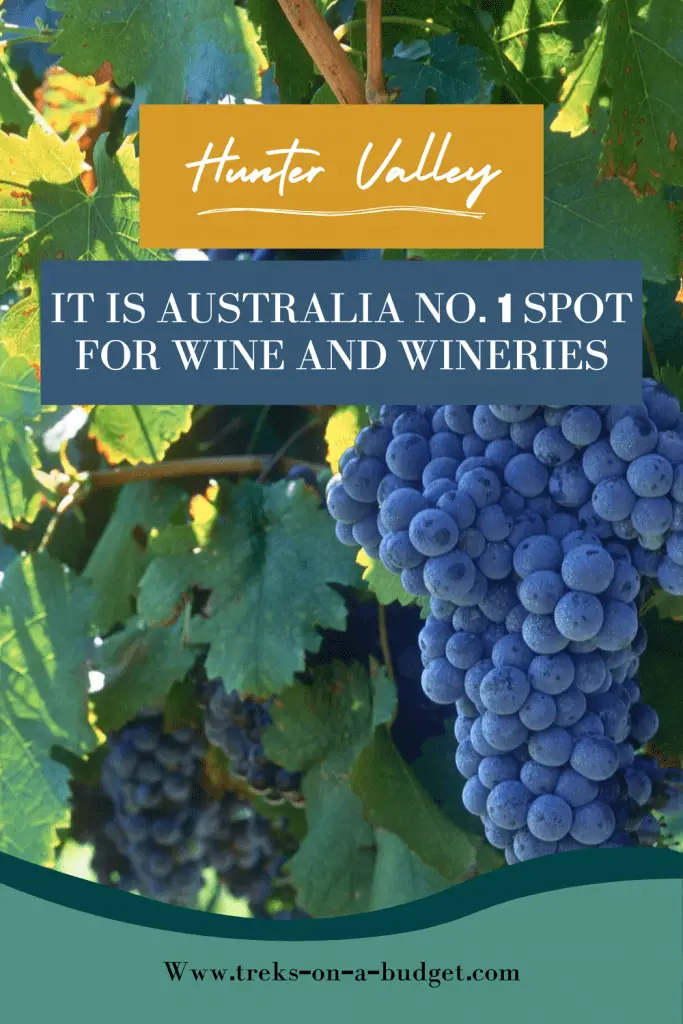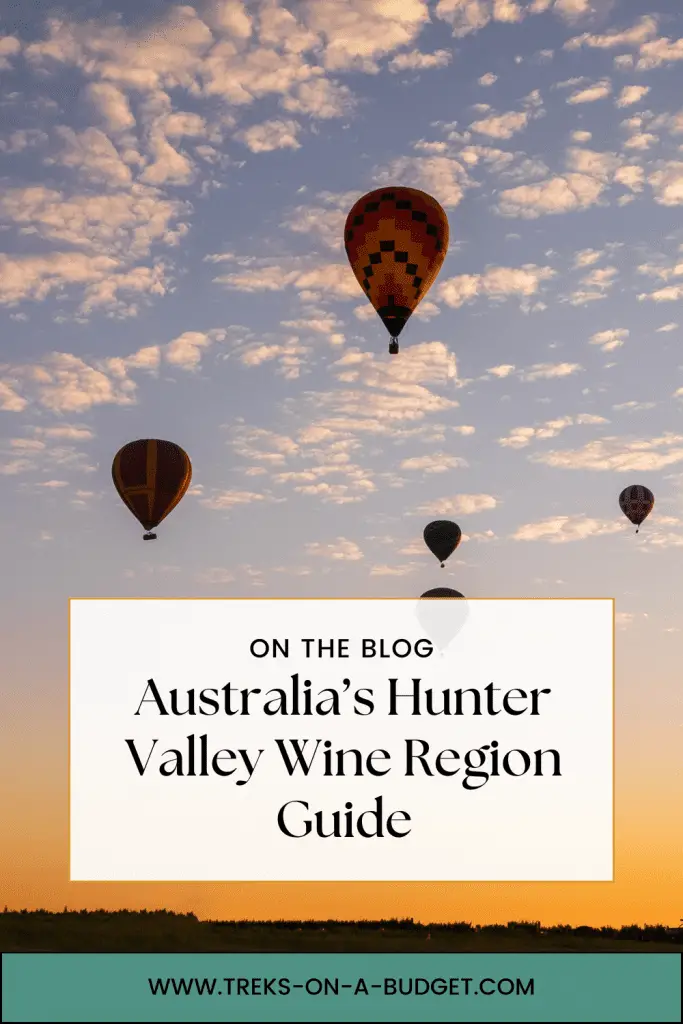Exploring The Richness Of The Hunter Valley Wine Region
Estimated reading time: 22 minutes
The Hunter Valley Wine Region stands as a testament to Australia’s rich viticultural heritage. Nestled just a short drive from Sydney, this region offers an array of cellar doors, each with its unique charm and selection of wines. Therefore, the scenic journey from Sydney to the Hunter Valley sets the stage for an unforgettable exploration of flavors and history.
Firstly, visitors are welcomed by the rolling hills and lush vineyards that define the landscape of the Hunter Valley Wine Region. The area’s unique terroir, a combination of climate and soil, contributes to the production of some of the world’s most acclaimed wines. Among these, the Hunter Valley Semillon has garnered international praise for its distinct taste and aging potential.
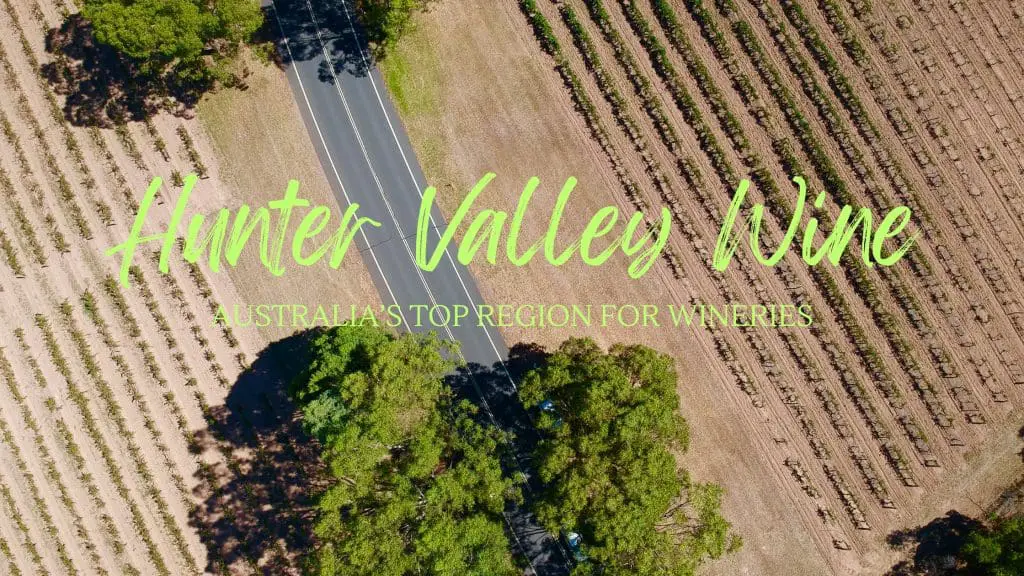
The Hunter Valley Wine Region is not just about wine tasting; it’s a cultural experience. Each cellar door provides a glimpse into the winemaking process, from grape selection to bottling. Wine enthusiasts and novices alike are invited to engage with winemakers, offering insights into the passion and precision behind each bottle.
Yearly events and festivals celebrate the Hunter Valley Wine Region’s contributions to the Australian wine industry. These gatherings highlight the region’s gastronomy, showcasing local produce alongside exquisite wines. The Hunter Valley, with its rich history and vibrant community, continues to enchant visitors, solidifying its place as a cornerstone of Australian wine culture.
Table of contents
- A Journey Through Time: The History of Hunter Valley
- The Terroir of Hunter Valley Wine Region
- Unveiling the Grape Varieties of Hunter Valley
- Iconic Wineries and Their Legendary Wines
- The Geography That Defines Hunter Valley
- Wine Production: The Heartbeat of Hunter Valley
- Current Events and Future Prospects in Hunter Valley
- Viticulture: The Backbone of Hunter Valley’s Winemaking
- Tasting the Essence of Hunter Valley
- Concluding Thoughts on Hunter Valley’s Wine Legacy
A Journey Through Time: The History of Hunter Valley

The history of the Hunter Valley Wine Region is as rich and complex as the wines it produces. It began in the early 19th century when pioneers recognized the valley’s potential for viticulture. James Busby, often hailed as the father of the Australian wine industry, played a pivotal role in shaping the region’s wine future. His collection of vine cuttings from Europe laid the foundation for the diverse wine portfolio the region boasts today.
Over the decades, the Hunter Valley Wine Region evolved, overcoming challenges such as pests, diseases, and market fluctuations. The perseverance of its winemakers and the adaptability of its vineyards have allowed the region to thrive. Today, the Hunter Valley is synonymous with premium wine, attracting visitors from Sydney and beyond to its cellar doors. The journey from its humble beginnings to becoming a cornerstone of the Australian wine industry is a story of resilience and success.
The Pioneering Days with James Busby
In the 1820s, James Busby embarked on a journey that would forever change the Australian wine landscape. With a vision of cultivating European grape varieties in Australian soil, Busby collected over 500 vine cuttings during his travels across Europe. His return to Australia marked the beginning of a new era in Australian viticulture, with the Hunter Valley Wine Region at its heart.
Busby’s contributions extended beyond the introduction of new grape varieties. He was instrumental in educating local farmers and vintners about modern viticultural techniques. His treatises on winemaking and vineyard management served as valuable resources, guiding the Hunter Valley Wine Region’s early vintners. Busby’s legacy is still celebrated today, as his pioneering efforts laid the groundwork for the region’s flourishing wine industry.
Evolution of Wine Making from the 19th Century
The Hunter Valley Wine Region’s journey through the 19th century was marked by experimentation and adaptation. Early vintners faced the challenges of understanding the local terroir and finding the grape varieties best suited to the region’s climate. Therefore, through trial and error, they began to identify the varietals that thrived, including Shiraz and Semillon, which became hallmarks of the region.
The introduction of new wine-making technologies and practices from Europe and America further propelled the Hunter Valley Wine Region’s evolution. Innovations in vineyard management, fermentation, and aging processes enhanced the quality of the wines. By the turn of the century, the Hunter Valley had established itself as a key player in the Australian wine industry, with its wines gaining recognition for their distinct character and quality.
The Modern Era of Wine Production
The modern era of wine production in the Hunter Valley Wine Region has been characterized by a blend of tradition and innovation. Winemakers have continued to hone their craft, drawing on the region’s rich history while incorporating contemporary techniques. The focus has shifted towards sustainable viticulture, reflecting a global trend towards environmentally responsible wine production.
Today’s Hunter Valley winemakers are as diverse as the wines they produce, ranging from boutique family-run estates to internationally renowned labels. This era has also seen the rise of wine tourism, with visitors flocking to the region’s cellar doors for a taste of its world-class wines. The Hunter Valley Wine Region continues to evolve, promising a future as vibrant and fruitful as its past.
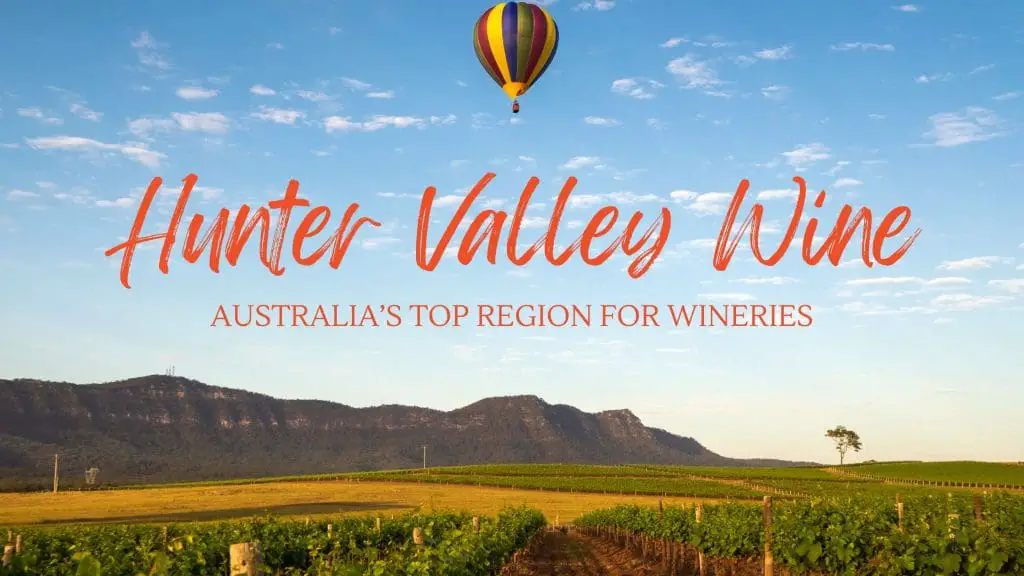
The Terroir of Hunter Valley Wine Region
The terroir of the Hunter Valley Wine Region is a vital component of its success in winemaking. Hence, the term “terroir” encompasses the unique combination of climate, soil, and landscape that influences the flavor and quality of the wine. In the Hunter Valley, the warm, humid climate plays a significant role, allowing grapes to ripen fully and develop rich flavors.
Soil types across the region vary, from the sandy loams found along the riverbanks to the volcanic soils of the hillside vineyards. This diversity in soil composition allows vintners to cultivate a wide range of grape varieties, each finding a niche where it can flourish. The interplay between these factors creates the distinctive terroir that is the foundation of the Hunter Valley Wine Region’s exceptional wines.
Understanding the Climate’s Influence on Viticulture
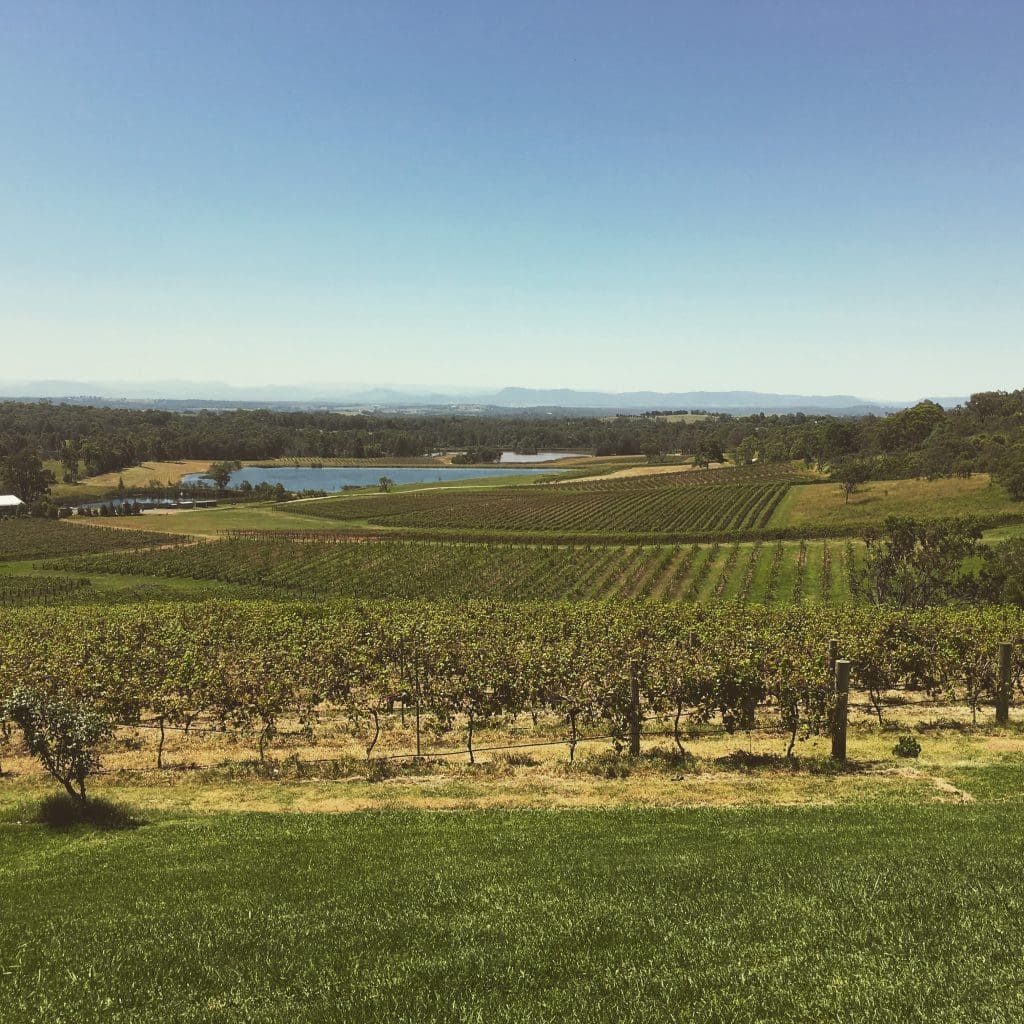
The climate of the Hunter Valley Wine Region significantly impacts viticulture, shaping the character of its wines. The region experiences hot, humid summers and mild winters, a climate pattern that challenges vintners but also offers unique opportunities. This climate allows for the early ripening of grapes, leading to the production of wines with intense flavors and high alcohol content.
Winemakers in the Hunter Valley have adapted their practices to harness the benefits of the region’s climate. Strategic vineyard placement, careful selection of grape varieties, and innovative viticultural techniques mitigate the risks of heat and humidity. This adaptability ensures the continued production of high-quality wines, with the region’s signature Semillon and Shiraz varieties thriving under these conditions.
The Diverse Soils and Their Impact on Grape Varieties
The Hunter Valley Wine Region is home to a mosaic of soil types, each contributing to the region’s viticultural diversity. From the nutrient-rich alluvial soils of the valley floors to the rocky, well-drained soils of the higher elevations, the variety of soils influences which grape varieties are planted where. This diversity is a key factor in the region’s ability to produce a wide spectrum of wine styles.
Mount Pleasant, a notable area within the Hunter Valley, exemplifies the impact of soil diversity on wine production. The unique composition of its soils, rich in minerals and with good drainage, is particularly conducive to growing high-quality Semillon and Shiraz grapes. This interaction between soil and grape variety is a prime example of how the Hunter Valley Wine Region’s terroir contributes to the distinctiveness of its wines.
Unveiling the Grape Varieties of Hunter Valley
The Hunter Valley Wine Region is renowned for its diverse grape varieties, each contributing to the rich tapestry of wines produced in the area. This diversity allows for a wide range of wine styles, from crisp and refreshing whites to robust and complex reds. The adaptability of the region’s viticulture has led to the successful cultivation of both traditional and emerging grape varieties.
Among the plethora of grapes grown, certain varieties have come to define the Hunter Valley Wine Region’s identity. Semillon, for instance, is celebrated for its exceptional quality and aging potential, earning the region worldwide acclaim. The exploration of grape varieties in the Hunter Valley is an ongoing journey, with winemakers continually experimenting to unlock the full potential of their terroir.
The Signature Hunter Valley Semillon
The Hunter Valley Wine Region is synonymous with Semillon, a grape variety that has found a distinguished expression in this terroir. Hunter Valley Semillon is renowned for its light body, crisp acidity, and ability to age gracefully, developing complex flavors over time. This wine captures the essence of the region’s climate and soil, showcasing a unique profile that distinguishes it from Semillon produced elsewhere.
Initially, Hunter Valley Semillon may present subtle flavors, but with aging, it transforms, revealing rich, toasty, and honeyed characteristics. This remarkable evolution makes it a favorite among wine collectors and enthusiasts. The Hunter Valley’s commitment to producing high-quality Semillon is a testament to the region’s dedication to excellence in winemaking.
A Spectrum of Grape Varieties Shaping the Region’s Wines
While Semillon may be the star, the Hunter Valley Wine Region boasts a spectrum of grape varieties, each adding depth and diversity to its wine portfolio. Shiraz, with its robust flavors and velvety texture, stands out among the reds, reflecting the region’s capability to produce premium quality red wines. Chardonnay, Verdelho, and Cabernet Sauvignon are also prominent, offering a range of styles from rich and oaky to light and fruity.
Mount Pleasant, among other areas in the Hunter Valley, highlights the success of these varieties, producing wines that are expressive of their specific terroir. The exploration of alternative grape varieties continues to expand the Hunter Valley Wine Region’s repertoire, inviting wine lovers to discover new and exciting tastes. The diversity of grapes is a cornerstone of the region’s winemaking tradition, promising a delightful discovery with every sip.
Iconic Wineries and Their Legendary Wines
The Hunter Valley wine region boasts iconic wineries, each with a story to tell. Among these, Brokenwood shines for its exceptional wines. Known for its commitment to quality, Brokenwood has become a must-visit for wine enthusiasts. Its wines capture the essence of the region, making every sip a memorable experience.
Tyrrell’s Vat 47 Chardonnay represents another iconic chapter in the Hunter Valley wine region. This wine has led the way with its use of screwcaps, ensuring freshness and longevity. Tyrrell’s dedication to innovation has set a new standard for Hunter Valley Chardonnay, embodying the spirit of the region’s winemaking.
Brokenwood and Its Quintessential Wines
Brokenwood is synonymous with the Hunter Valley wine region. Its journey began in 1970, and today, it stands as a testament to the region’s winemaking excellence. Brokenwood’s Cricket Pitch Range, in particular, has garnered acclaim. This range showcases the versatility and quality of the Hunter Valley’s terroir, making Brokenwood a beacon of winemaking in the region.
Among Brokenwood’s offerings, the Graveyard Vineyard Shiraz is legendary. It epitomizes the pinnacle of Hunter Valley Shiraz, with its rich flavor profile and depth. This wine not only reflects Brokenwood’s mastery over winemaking but also the unique characteristics that the Hunter Valley wine region brings to its grapes.
Tyrrell’s Vat 47 Chardonnay: A New Chapter with Screwcaps

Tyrrell’s Vat 47 Chardonnay is a trailblazer in the Hunter Valley wine region. Introduced in the late 1960s, it was the first Australian Chardonnay to use French oak in its aging process. This innovative approach brought a new dimension to Hunter Valley Chardonnay, highlighting the region’s potential on the world stage. The adoption of screwcaps in recent years has further solidified its reputation, ensuring the wine’s purity and aging potential.
This pioneering spirit is a hallmark of the Hunter Valley wine region. Tyrrell’s commitment to quality and innovation has not only enhanced the profile of Hunter Valley Chardonnay but has also inspired other winemakers in the region. Vat 47 continues to be a benchmark for Australian Chardonnay, showcasing the Hunter Valley’s ability to evolve while maintaining its rich winemaking heritage.
The Geography That Defines Hunter Valley
The Hunter Valley wine region is defined by its stunning geography. From the meandering Hunter River to its picturesque rolling hills, the landscape is as diverse as it is beautiful. These natural features play a crucial role in the region’s viticulture, influencing both the climate and the soil types found throughout the valley. This unique combination of geographical elements creates an ideal environment for growing a variety of grapes.
Moreover, the region’s natural beauty is not just a backdrop for winemaking but an integral part of the Hunter Valley wine region’s identity. The contrast between the lush vineyards and rugged mountains provides an unforgettable visual experience, drawing visitors from around the world. It’s this remarkable geography that helps make the wines from this area truly stand out.
From Rivers to Rolling Hills: The Natural Landscape
The Hunter Valley wine region is a tapestry of natural wonders. The Hunter River, with its tributaries, nourishes the land, providing water essential for vineyard growth. Meanwhile, the rolling hills offer not just breathtaking views but also a variety of microclimates. These microclimates allow for the cultivation of different grape varieties, each finding its own niche within the landscape. The region’s topography, with its slopes and elevations, further influences the character of Hunter Valley wines.
This diverse natural landscape is vital for the Hunter Valley wine region. It contributes to the complexity and richness of the wines produced here. Wine lovers can explore the valleys and hills, experiencing firsthand the environment that shapes their favorite wines. The Hunter Valley’s natural landscape is indeed a cornerstone of its winemaking success.
Key Towns and Cities Within the Wine Region
The Hunter Valley wine region is dotted with charming towns and cities, each adding to the region’s allure. Pokolbin stands at the heart of the wine country, surrounded by vineyards and wineries. It’s the epicenter for wine tourism, offering a plethora of tasting rooms and wine-related experiences. Meanwhile, Cessnock serves as a gateway to the region, providing essential amenities and services to visitors.
Singleton and Maitland, though less known, play crucial roles in the Hunter Valley wine region. These areas offer a glimpse into the region’s rich history and cultural heritage, complementing the wine experience with a touch of local tradition. The towns and cities within the Hunter Valley are more than just stops on a map; they’re integral parts of the wine region’s fabric, each contributing to its unique charm.
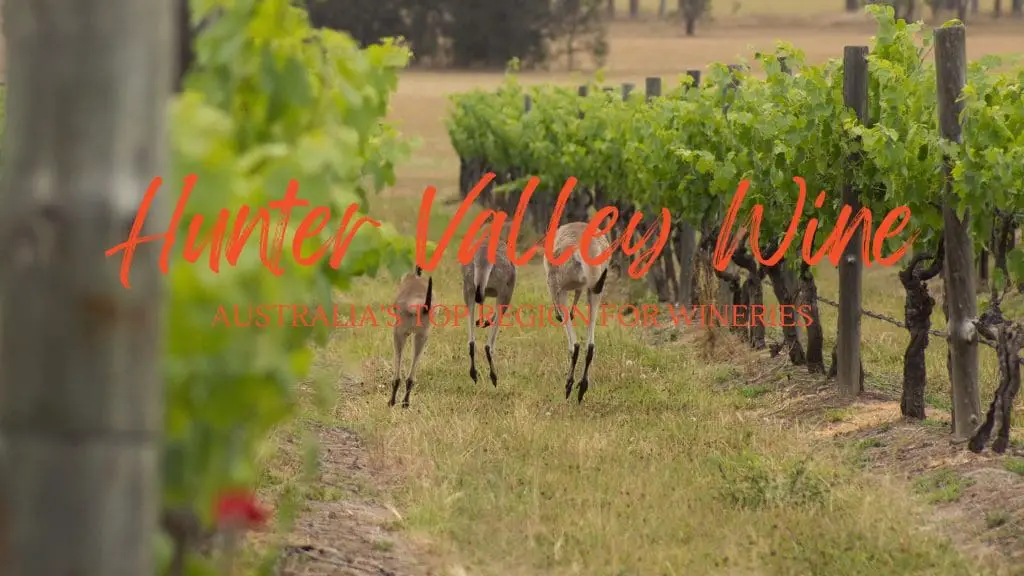
Wine Production: The Heartbeat of Hunter Valley
Wine production is the heartbeat of the Hunter Valley, driving both its economy and its culture. This region, renowned for its viticulture, combines traditional techniques with modern innovations. This blend ensures that Hunter Valley’s wines remain at the forefront of quality. Winemakers here are not just preserving a rich tradition; they’re constantly seeking ways to enhance it.
The dedication of Hunter Valley’s winemakers to their craft is evident in every bottle. From the vineyard to the cellar, each step of the winemaking process is handled with care and precision. This meticulous approach has solidified the Hunter Valley wine region’s reputation on the global stage. Wine production here is not just an industry; it’s an art form, celebrated and revered by wine enthusiasts worldwide.
Traditional Techniques Meets Innovation
In the Hunter Valley wine region, the marriage of traditional techniques and innovation is evident. Winemakers honor the legacy of their predecessors while embracing new technologies and methods. This dynamic approach allows for the exploration of new styles and flavors, ensuring the Hunter Valley’s wines remain both authentic and exciting. The region’s winemakers are custodians of history and pioneers of the future, dedicated to excellence.
The use of oak barrels, open fermenters, and hand-picking grapes are traditions that continue to define the Hunter Valley wine region. However, the introduction of sustainable practices and precision viticulture demonstrates the winemakers’ commitment to innovation. This balance between the old and the new is what makes the Hunter Valley wine region a leader in the wine industry. It’s a testament to the winemakers’ passion and skill.
Challenges and Triumphs in Sustainable Wine Production
The Hunter Valley wine region faces its share of challenges in sustainable wine production. Climate change, water scarcity, and environmental concerns demand attention and action. Yet, it’s these challenges that have spurred Hunter Valley’s winemakers to innovate and adapt. By implementing water-saving technologies and organic farming practices, they’re not just overcoming obstacles; they’re setting new standards for sustainability in winemaking.
The commitment to sustainable wine production has led to triumphs for the Hunter Valley wine region. These efforts are not only preserving the environment but also enhancing the quality of the wines. By focusing on sustainability, Hunter Valley’s winemakers are ensuring the longevity of their vineyards and the continued success of their wines. Their dedication to eco-friendly practices is a beacon of hope, proving that great wine can be produced in harmony with nature.
Current Events and Future Prospects in Hunter Valley

The Hunter Valley wine region is always evolving, facing new challenges and embracing opportunities. Recent sales of historic properties have stirred the wine community, signaling changes on the horizon. These transactions bring fresh perspectives and energy to the region, potentially leading to innovative practices and new wine styles. The Hunter Valley is at a pivotal moment, poised for transformation.
Legislative changes also play a critical role in the Hunter Valley wine region’s future. Regulations affecting land use, water rights, and environmental protection have the potential to reshape the wine industry. Hunter Valley winemakers are closely monitoring these developments, ready to adapt and thrive. The future of the Hunter Valley wine region is bright, with its rich heritage serving as a foundation for new growth and innovation.
The Sale of Historic Properties and Their Impact on the Wine Scene
The recent sale of historic properties in the Hunter Valley wine region has sparked conversation among wine enthusiasts and industry experts alike. These sales represent a significant shift, as new owners bring their visions to these esteemed vineyards and wineries. This infusion of new ideas and investments is expected to invigorate the Hunter Valley wine scene, introducing novel approaches to winemaking and vineyard management.
While change can be daunting, it also brings opportunities for growth and innovation. The Hunter Valley wine region stands on the cusp of a new era, with these historic properties leading the way. As these sites blend their rich traditions with fresh perspectives, the Hunter Valley wine scene is set to flourish, promising exciting developments for wine lovers worldwide.
Legislative Changes and Their Potential Effects on Vineyards
Legislative changes are shaping the landscape of the Hunter Valley wine region. New laws and regulations concerning environmental management, land use, and sustainability practices have the potential to impact vineyards significantly. Hunter Valley winemakers are navigating these changes, adopting new strategies to comply with regulations while maintaining the quality of their wines.
This legislative environment presents both challenges and opportunities for the Hunter Valley wine region. Winemakers are leveraging these changes to innovate, adopting eco-friendly practices that benefit both the environment and the wine. As the region adapts, it sets a precedent for sustainable winemaking, demonstrating resilience and commitment to excellence. The future of the Hunter Valley wine region is intertwined with these legislative developments, guiding its path forward.
Viticulture: The Backbone of Hunter Valley’s Winemaking
Viticulture in the Hunter Valley wine region plays a critical role in the area’s winemaking success. The region’s unique climate and soil types provide an ideal environment for growing a variety of grapes. Hunter Valley winemakers pay close attention to vineyard management practices to ensure the highest quality grape production. The focus on viticulture helps maintain Hunter Valley’s reputation as a premier wine-producing area.
The challenges of viticulture in the Hunter Valley wine region, including managing pests and diseases, are met with innovative solutions. Winemakers here have adopted sustainable practices to protect their vineyards and the surrounding environment. This commitment to excellence in viticulture ensures the continued production of exceptional wines that the Hunter Valley wine region is known for.
Managing Hazards and Overcoming Challenges in the Vineyards
Hunter Valley winemakers face various challenges in the vineyards, from unpredictable weather to pests. They tackle these issues head-on with a mix of traditional and modern techniques. By carefully monitoring the vineyards and adapting their practices, winemakers ensure the health of their vines. This resilience contributes to the high-quality wines the Hunter Valley wine region produces.
Adaptation Strategies and Innovation in Vineyard Management
Innovation is key to managing the vineyards of the Hunter Valley wine region. Winemakers employ advanced technology to monitor climate conditions and soil health. These tools help them make informed decisions about irrigation and pest control. The use of drones for aerial views of the vineyards is one example of how technology aids in precise vineyard management.
Adaptation strategies also include experimenting with grape varieties suited to the changing climate. Hunter Valley winemakers are exploring new grape types that can thrive in warmer temperatures. This forward-thinking approach ensures the Hunter Valley wine region remains at the forefront of Australian winemaking.
Tasting the Essence of Hunter Valley
The wines of the Hunter Valley wine region are a true reflection of the area’s rich winemaking heritage. From bold reds to crisp whites, the region offers a diverse range of flavors. Wine tastings here provide an opportunity to experience the unique characteristics of Hunter Valley wines. Visitors are often amazed by the depth and complexity of the flavors.
Wineries in the Hunter Valley wine region often pair their tastings with local cuisine, enhancing the wine-tasting experience. This combination of fine wine and food showcases the best the region has to offer. It’s a perfect way to immerse oneself in the culture and tradition of the Hunter Valley wine region.
Expert Choices: Must-Try Hunter Valley Semillon
Hunter Valley Semillon is the region’s signature wine, known for its crisp acidity and longevity. This wine evolves beautifully with age, developing rich and complex flavors over time. Wine enthusiasts often seek out older vintages for a taste of this transformation. The Hunter Valley Semillon is a must-try for anyone visiting the region.
Winemakers in the Hunter Valley wine region take great pride in their Semillon, carefully crafting each vintage to express the terroir. Tasting a range of Semillons, from young and zesty to aged and mellow, offers insight into the skill and dedication of Hunter Valley winemakers. It’s an experience that captures the essence of the region’s winemaking tradition.
Discovering New and Alternative Australian White Wines
Beyond Semillon, the Hunter Valley wine region is experimenting with new and alternative white wine grapes. Varieties such as Verdelho, Chardonnay, and Viognier are gaining popularity. These wines add to the diversity of the region’s offerings, attracting wine lovers looking for something different. The exploration of new grape varieties speaks to the innovative spirit of Hunter Valley winemakers.
These alternative whites often display unique flavors and aromas, reflecting the varied terroir of the Hunter Valley wine region. Tastings of these wines provide an exciting adventure for the palate. They offer a fresh perspective on Australian white wines, further cementing the Hunter Valley’s place as a leader in wine production.
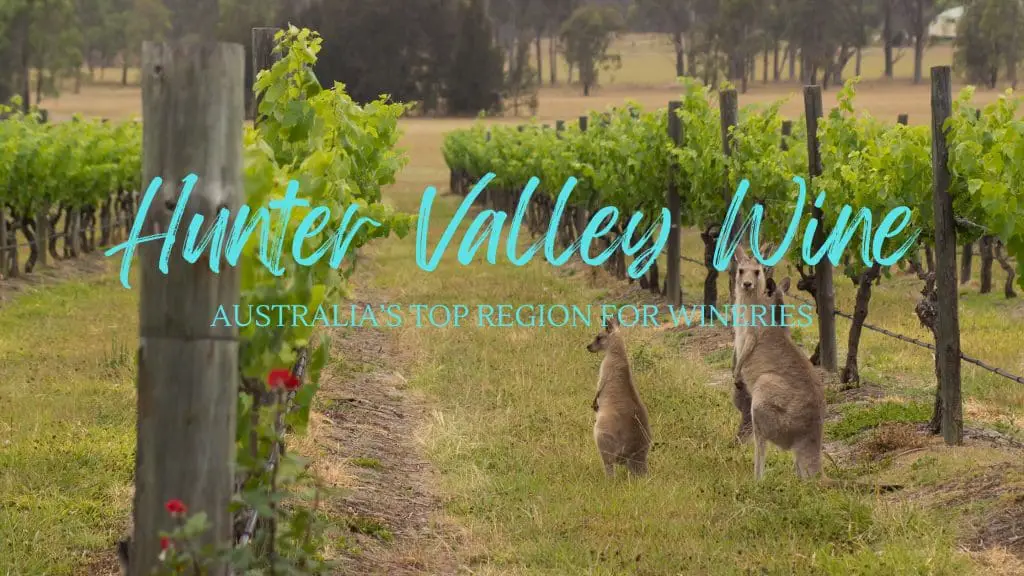
Concluding Thoughts on Hunter Valley’s Wine Legacy
The Hunter Valley wine region has established itself as a cornerstone of Australian winemaking. Its contribution to the industry extends beyond producing exceptional wines. The region has been instrumental in pioneering viticultural practices and promoting sustainable winemaking. Hunter Valley’s commitment to quality and innovation has set a high standard for wine regions around the world.
Looking to the future, the Hunter Valley wine region continues to embrace new challenges and opportunities. Whether it’s exploring new grape varieties or advancing sustainable practices, the region is always moving forward. This dynamic approach ensures that Hunter Valley will remain a beloved and respected wine region for generations to come.
The Region’s Contribution to New South Wales and the World of Wine
The Upper Hunter Valley plays a significant role in New South Wales’ wine production, contributing to the state’s reputation on the global wine stage. The region’s wines, especially the acclaimed Semillon and Shiraz, have garnered international praise. This recognition has helped promote Australian wines worldwide, showcasing the diversity and quality of wines the country has to offer.
Through its innovative winemaking and commitment to excellence, the Upper Hunter Valley has influenced winemaking techniques and standards globally. The region’s success stories inspire winemakers worldwide to pursue quality and sustainability in their practices. The Upper Hunter Valley’s impact on the wine industry is a testament to its importance in the global wine community.
Embracing the Future While Honoring Tradition in Hunter Valley
In the Hunter Valley wine region, tradition and innovation go hand in hand. The towns of Broke, Fordwich, and Pokolbin are at the heart of this storied wine region, surrounded by national parks and more than 150 wineries. These communities honor the region’s winemaking heritage while welcoming new ideas and technologies. This balance ensures the continued success and relevance of the Hunter Valley wine country.
Located just west of Newcastle, the Hunter Valley wine region is a vital part of New South Wales’ cultural and economic landscape. The region’s focus on Semillon and Shiraz, alongside a commitment to sustainable practices, exemplifies how it honors tradition while embracing the future. As the Hunter Valley wine region moves forward, it remains a beacon for wine lovers and winemakers alike, celebrating the best of Australian wine.
If you enjoyed this post, please take a minute and consider about supporting me by buying me a coffee. Every little bit goes towards helping to keep this page up and running. Thanks!
Pin Me Now

